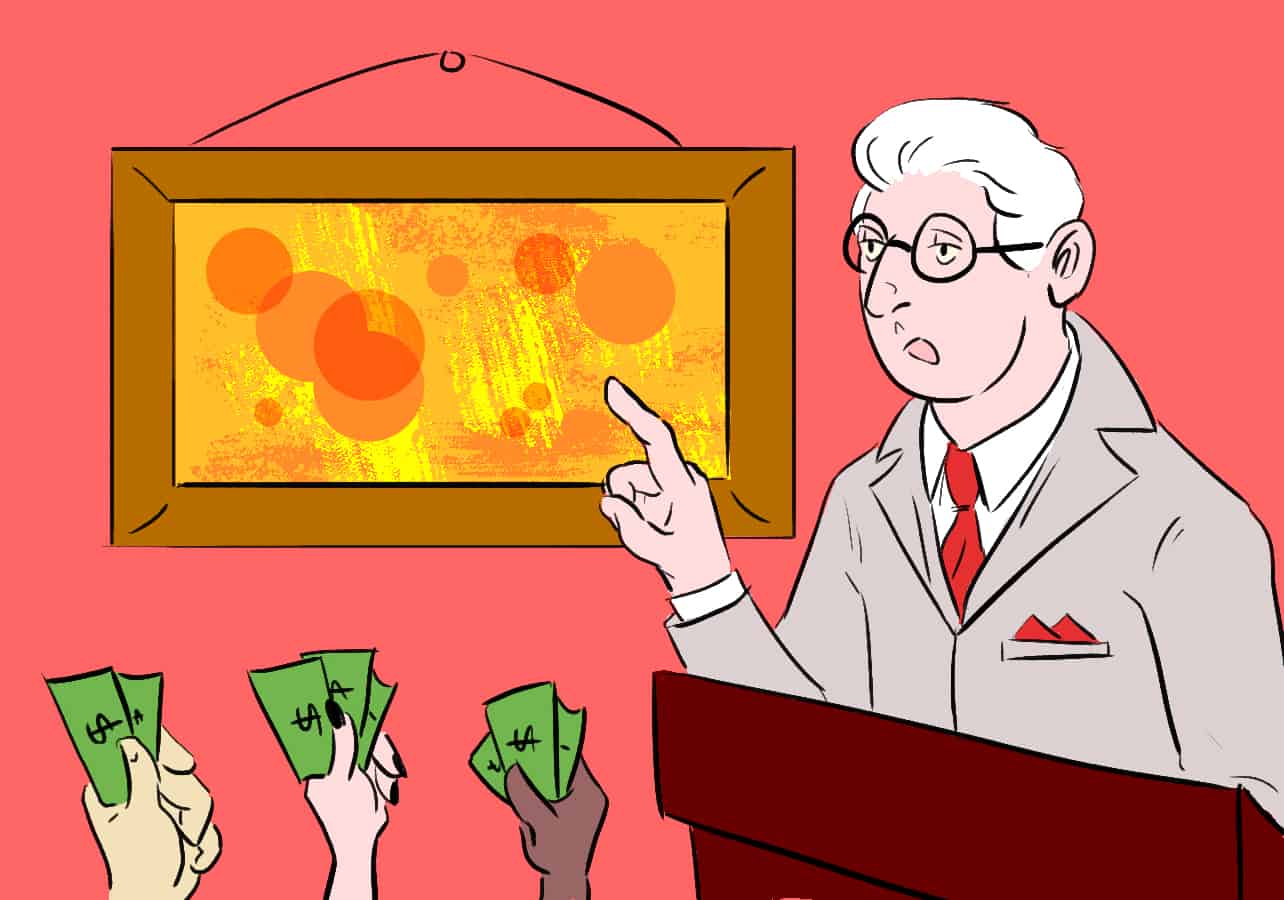[dropcap]E[/dropcap]arlier this month, Heffel Fine Art Auction House presented the public with a free preview of its Fine Canadian Art and Post-War & Contemporary Art Auction, which opens in Vancouver on May 25. The preview allowed for patrons to explore historic paintings that are rich with Canadian sentiment and private artworks that have rarely been displayed.
It was a dreary Saturday afternoon when I approached the Heffel Fine Art Auction House, located in the heart of Yorkville. The possibility of an unprecedented look at the works of painter Emily Carr presided in my mind, and urged me to brave the weather.
The auction house’s narrow interior was intimate: white walls created an impressive negative space, tightly wrapping its close quarters. The magnificent art hanging in various shapes and sizes on each and every wall created an organized mosaic. It was a warm place for collectors, savants, artists and just regular folk interested in a historical trip through art.
[pullquote]Carr is arguably Canada’s foremost female artist. She often chose to illustrate the livelihood of First Nations people and the vast landscape of British Columbia.[/pullquote]
Carr is arguably Canada’s foremost female artist. She often chose to illustrate the livelihood of First Nations people and the vast landscape of British Columbia. The auction house itself is no stranger to Carr’s work. Last May, Carr’s mature period painting Forest Light sold for $1.53 million, far above its presale estimate value of $400,000–$600,000.
Five of Carr’s pieces are up for auction, including Woodland Interior, a lustrous oil painting also from her mature period.
Her 1927 watercolor Gitwangak is my personal favourite. It depicts a row of large totem poles on the edge of the coast, with a forest and rolling mountains in the background. The watercolor blends light and dark browns to capture the warm image of an Indigenous child playing with dogs central to the foreground. Gitwangak is expected to sell for between $200,000–$300,000 but may draw in far more.
Carr’s work is easy to praise and feels like a tribute to the beauty of nature, a sentiment she captured well throughout her career. Gitwangak specifically serves as an unfiltered look at the Pacific Northwest and its First Nations culture, a perspective that isn’t explored enough today.
However, the auction house included more than just Carr’s work. Throughout the adjacent buildings were examples of two distinct styles: post-war and contemporary art.
Legendary Québécois artist Jean Paul Lemieux, known for depicting desolate, boundless spaces, also has several pieces up for auction. Fellow French-Canadian artist Marc-Aurèle de Foy Suzor-Coté’s painting La vieille église de Sherbrooke-Est par temps de neige is a painting commissioned to the Saint-Jean-Baptiste Church in Sherbrooke. Initially a gift from Suzor-Coté in 1913 to pastor Father Joseph-Arthur Laporte, the piece is set to be auctioned for the first time.
Group of Seven painter Lawren Harris’ 1913–14 oil painting Laurentian Landscape is another notable artwork. Harris created it prior to the group’s formation, yet it reflects the ideals of natural landscapes that the group would later seek to present in their work. The oil painting is estimated to receive between $1.2 million–$1.6 million, a huge leap from its original purchase price of $8,400 in 1966.
Celebrated Canadian artist Alex Colville’s Swimming Dog and Canoe may be the highlight of the post-war and contemporary section. An acrylic masterpiece of Colville’s signature detailed dot style, the piece is an exceptional composition about an everyday event. Colville, who regularly used animals as subjects, depicted a black dog in contrast to the green water and tree line, while a pair of paddlers in a canoe observe the scene in the background.
A virtual tour is available on the Heffel Fine Art Auction House website: see the works before they are auctioned off and enter back into obscurity on May 25.


